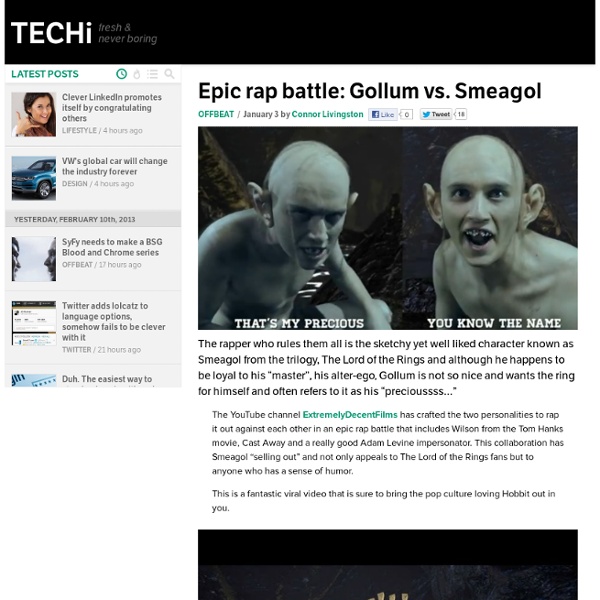



Brewing Tea Tea Plant All true tea comes from the camellia sinensis plant. The final product falls into one of three categories, depending on how long the tea is allowed to ferment: green tea, oolong tea, and black tea. Black Tea Black Tea is dried on special withering racks. Then, they're rolled, left to ferment in special temperature and humidity controlled rooms for two to four hours, and finally allowed to dry. Chai Tea Chai is actually the generic word for tea in many languages. Green Tea Green tea is not fermented at all. Oolong Tea Oolong tea is only partially fermented. Loose Leaf Tea vs. Photos from Wikimedia
iTechMax - Software, Technology, Blogging, Tips and Tricks popurls® | the genuine news aggregator for the latest web buzz 20 Things I Learned About Browsers and the Web IllustrationChristoph Niemann Writers/EditorsMin Li Chan, Fritz Holznagel, Michael Krantz Project CuratorMin Li Chan & The Google Chrome Team DesignFiPaul Truong DevelopmentFi Very Special Thanks To Brian Rakowski, Ian Fette, Chris DiBona, Alex Russell, Erik Kay, Jim Roskind, Mike Belshe, Dimitri Glazkov, Henry Bridge, Gregor Hochmuth, Jeffrey Chang, Mark Larson, Aaron Boodman, Wieland Holfelder, Jochen Eisinger, Bernhard Bauer, Adam Barth, Cory Ferreria, Erik Arvidsson, John Abd-Malek, Carlos Pizano, Justin Schuh, Wan-Teh Chang, Vangelis Kokkevis, Mike Jazayeri, Brad Chen, Darin Fisher, Johanna Wittig, Maxim Lobanov, Marion Fabing Nicolas, Jana Vorechovska, Daniele De Santis, Laura van Nigtevegt, Wojtek Cyprys, Dudley Carr, Richard Rabbat, Ji Lee, Glen Murphy, Valdean Klump, Aaron Koblin, Paul Irish, John Fu, Chris Wright, Sarah Nahm, Christos Apartoglou, Meredith Papp, Eric Antonow, Eitan Bencuya, Jay Nancarrow, Ben Lee, Gina Weakley, Linus Upson, Sundar Pichai & The Google Chrome Team
COLT + RANE Metaprogramming Metaprogramming usually works in one of three ways[citation needed]. The first way is to expose the internals of the run-time engine to the programming code through application programming interfaces (APIs). The second approach is dynamic execution of expressions that contain programming commands, often composed from strings, but can also be from other methods using arguments and/or context.[1] Thus, "programs can write programs." Although both approaches can be used in the same language, most languages tend to lean toward one or the other. The third way is to step outside the language entirely. Approaches[edit] In statically typed functional languages[edit] Usage of dependent types allows proving that generated code is never invalid.[2] [edit] [edit] Macro systems[edit] IBM/360 assembler[edit] Examples[edit] #! This script (or program) generates a new 993-line program that prints out the numbers 1–992. One style of metaprogramming is to employ domain-specific programming languages (DSLs).
TechCrunch swissmiss C (Programming Language) C is one of the most widely used programming languages of all time,[8][9] and C compilers are available for the majority of available computer architectures and operating systems. C is an imperative (procedural) language. It was designed to be compiled using a relatively straightforward compiler, to provide low-level access to memory, to provide language constructs that map efficiently to machine instructions, and to require minimal run-time support. C was therefore useful for many applications that had formerly been coded in assembly language, such as in system programming. Despite its low-level capabilities, the language was designed to encourage cross-platform programming. The C language also exhibits the following characteristics: The origin of C is closely tied to the development of the Unix operating system, originally implemented in assembly language on a PDP-7 by Ritchie and Thompson, incorporating several ideas from colleagues. The cover of the book, The C Programming Language
[nytlabs] 1000 Awesome Things | A time-ticking countdown of 1000 awesome things File extension database